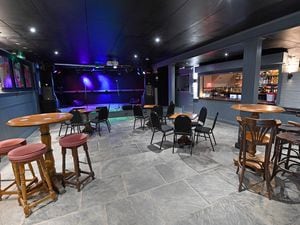How The Goal Post moved from luxury Wolverhampton family home to hotel
Historic photographs of a much-loved Wolverhampton pub that was being considered for demolition to make way for a petrol station have been revealed.
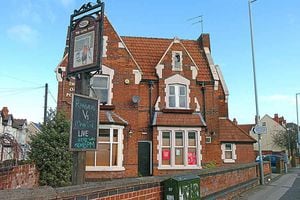
The Goal Post pub, now known as Lounge 107, on Waterloo Road, was built in 1865 as a private residence for a family who managed the Griffin, Morris & Griffin Ceres works in Cross Street North, off Cannock Road.
A traditional windmill, situated in Lower Stafford Street, was used to grind up materials that were then used in the Ceres works.
Roger Jeavons, 71, of Tyninghame Avenue, has researched the pub for almost 10 years and discovered that the building used to sit in amongst several rural fields, near to a Methodist chapel.
"I was originally looking into the history of the Molineux site when I spotted the building in a photo, with my magnifying glass, sitting in the background," he said.
"When I found out what it was originally called, that sparked my interest and it just went on from there."
Mr Jeavons uncovered the photographs, which show the site's development, at the Wolverhampton archives, having previously known the pub in his younger days, as the Red Roofs Hotel.
He said: "I never went in it when it was the Red Roofs, I was just a lad then. But people from my generation in the 1950s will remember it as Red Roofs."
The pub was originally known as Kettering Villa, lived in by William Moxon Fuller, his wife Eliza and their family. Other leading industrialists occupied the house until it became the Red Roofs Hotel in the 1940s.
The villa got its original name from William's family roots in Kettering, where his grandfather, Andrew Fuller, was a significant figure in the Baptist movement.
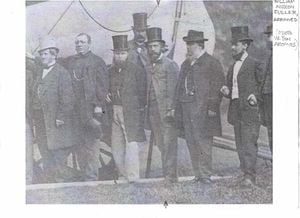
Andrew lived the last 30 years of his life in Kettering, and was a pastor there, at the Fuller Baptist Church.
Both his wife and daughter died before him, and it is likely William named the villa after his late grandfather, recognising this important aspect of their family's history.
The two black and white photographs, found within the Wolverhampton Archives, show Kettering Villa pictured shortly after it was built. It sits alongside the Methodist Chapel that was built at roughly the same time, shown at its right, partially hidden by trees. The photo is believed to have been taken from a rear window of possibly Molineux House (Hotel).
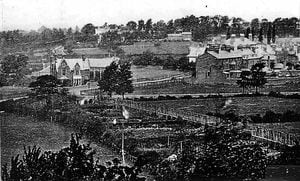
The second shows Mr Fuller in the centre as a typical Victorian gentleman, top hat, smart suit and well-kept beard. The picture is believed to have been taken in 1866 at Showell Pool, Bushbury, where Fuller is lined up with 21 other town dignitaries and top industrialists, the majority of which are in top hats, including present and future town mayors.
However, the Fullers did not remain for long at the house. J and E Whitehouse, wrought iron hinge, ship's tackle and garden tool manufacturers, moved in to replace them at Kettering Villa in 1873.
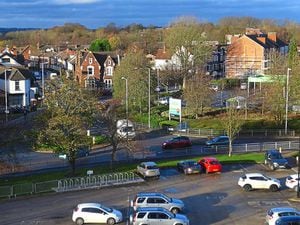
The pub, which is now a match-day favourite for fans visiting the Molineux, was set to be flattened and turned into an Asda petrol station, until plans were scrapped by the council in January 2014.
The report filed by the council stated that: "The proposal would result in the loss of this attractive corner building and its replacement with something which, by comparison, would detract from the present established character of the vicinity."
A petition of support with more than 300 signatures was submitted with the application.
"I'm so glad it's been saved," said Mr Jeavons. These photographs show that it is such a unique building, sitting on that corner. The reason it has survived so long is that it has been adapted to fit in with modern times, but the outside remains almost the same.
"It has such a rich history, as well as being a popular pub with locals even today."
Mr Jeavons has also contacted Reverend David Milner of Fuller Baptist Church to tell him of his historical discoveries.
"He was very enthusiastic. He couldn't believe how the building helped link Wolverhampton and Kettering. He's suggested he may even come over to visit the site soon."


